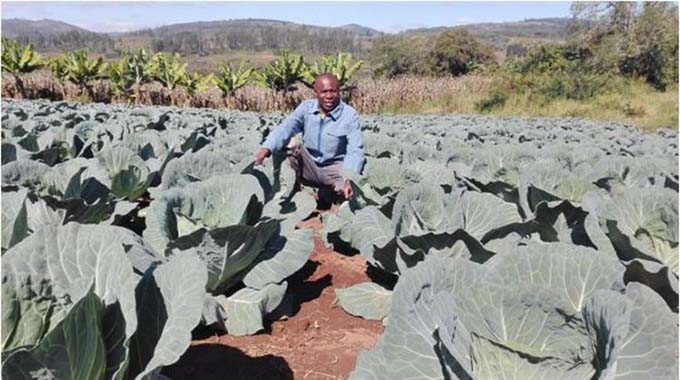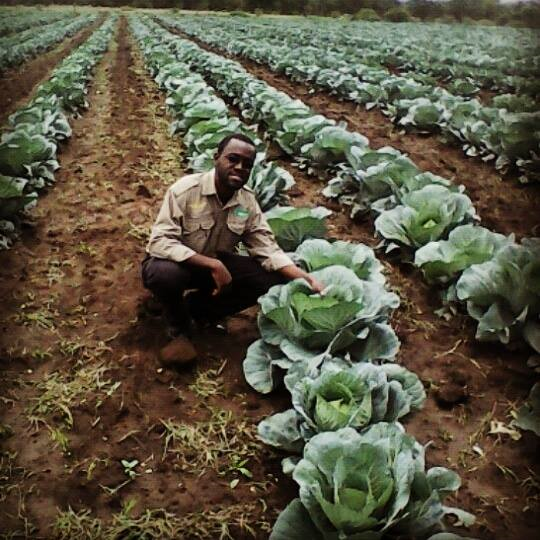How to Grow Cabbage Brassica oleracea Cabbage varieties come in a spectrum of colors from light green to dark purple. Cabbages grow best well drained fertile soils that are high in organic matter.
Cabbage collard and kale like other transplants should be hardened off before they are transplanted in the field.

How to grow cabbage in zimbabwe pdf. Cabbage is grown mainly as Rabi crop during winter Sept-Oct But around Nasik Maharashtra it is grown as Kharif crop also. Transplanting and spacing of Cabbage Plants. Sow cabbage seeds indoors 4-6 weeks before transplanting seedlings outdoors.
Like all leafy vegetables Cabbage prefers Nitrogen fertilizer. If it is available use cattle manure. Cabbages will require around 400kg per hectare of AN split into 3 applications between week 2 and week 8 after transplanting but still the quantities can vary with several soil status factors.
Apply 480 Kgs of dry manure into a seedling bed of 160 m² and then sow the seed on the seedbed. For manure 10 to 20 tons per hectare is generally recommended and 2 to 5 tons per hectare for chicken litter. 3ltrs of urine mixed in 8ltrs of water DI grow side dressing of earth boost biosulphate DAP A week to head formation Irrigation and manual fertilizer 2 A B Side dressing with inorganic.
Grows and produces more uniformly. Apply 30tha to 50t ha before preparing the soil. Where to Grow Cabbage.
If it is a virgin land cross rip and make up the beds. A pH of 60 to 65 water is considered optimum. At this stage cabbages were one and two months old respectively.
Manure makes growing cabbages far easier. This should produce sufficient seedlings for one acre of field. It improves the structure of the soil stimulates healthy growth and provides macro- and micronutrients.
Prepare the planting beds ahead of planting by covering beds with 2 to 3 inches 5-7cm of aged compost or commercial organic planting mix and turning it under to 12 inches 30cm deep. The scientific name of cabbage is Brassica oleracea a species that also includes broccoli cauliflower kale and Brussels sprouts. Resumes growth more quickly after transplanting and 4.
Grow cabbage in soil rich in organic matter that is well-drained. Cabbages grow well in most areas round Zimbabwe where irrigation water is available. At planting spread about a 14 match box of compound fertilizer commercial in a circle about 4-5 inches away form the stem of each plant.
Drainage must be good especially in the wet season so it is recommended that cabbages be grown on beds or ridges. Cabbages will grow in most soil types but heavier soils are preferred. Because cabbages are heavy feeders you have to ensure theres consistently lots of moisture.
Drier conditions affect the quality of the head and leaves and lead to a loss of flavour. But cabbages are fairly resistant to frost and can survive temperatures as low as -3C without damage. Seedlings should be transplanted as soon as they reach the desired size and.
5-6 weeks after planting using 14 match box. Hardening off is a technique used to slow plant growth prior. The ground must be ploughed deeply immediately before planting with a disk harrow or other suitable implement to a depth of 450 to 600 mm.
The soil PH should be between 60-75 but they can tolerate slightly alkaline soil. Cabbages grow best in a relatively cool and humid climate. Cabbage grows best where the soil pH is between 65 and 68.
Irrigation DI grow At transplanting and one week to head formation. They require cooler temperatures such ranging from 18 0 C- 21 0 C which is the reason why cabbages are mostly grown in the cooler months of the year particularly in agro-ecological regions 34 and 5 where ambient temperatures tend to be unbearably high during the summer months. The soil should be fumigated two weeks before planting time if necessary to control nematodes Munyoro said cabbages may be planted by direct seeding or transplanting of seedlings.
Should be fumigated two weeks before planting time if necessary to control nematodes. Lime accordingly to your soil analysis results. When planting cabbage seedlings plant them deep.
Manure and chicken litter can also be used but must be well decomposed or composted otherwise root burn may occur and affect crop growth and yield. The ideal temperatures for growth and development range from 18C to 20C. Cabbage thrives in well drained moisture retentive loamy soils well supplied with organic matter ideal soil Ph ranges from 55 - 65 Optimum temperature for growth and development is between 18 - 20 degrees celsius it is fairly resistant to frost and can survive at very low temperatures without damage.
If direct seeding is to be used about 2 kg of seed per hectare may be required. Planting Cabbage may be planted by direct-seeding or transplanting of seedlings. 06 Smallholder Horticultural Production and Business Trainers Manual The land reform programme 1980-2010 saw significant changes in the Zimbabwe agricultural landscape with effects hitting hard on the horticulture subsector which was dominated by.
Agropreneur Zimbabwe How To Grow Cabbage In Zimbabwe

Zimbabwe Potato Farming In Sacks Youtube

Cabbage Production A Fast Cash Generating Project Zim Business Ideas And Network Zbin

Secrets To Cabbage Production Part 1 The Manicapost

Starting Cabbage Farming Business In Zimbabwe And The Business Plan Startupbiz Zimbabwe

Starting Cabbage Farming Business Plan Pdf Startupbiz Global

Zimbabwe Farming Beginner S Guide To Cabbage Farming Simple Steps For Growing Cabbages

Farming Solutions From Windmill Effectively Growing Cabbages

Cabbage Farming In Zimbabwe Cabbage Production Manual

0 comments:
Post a Comment